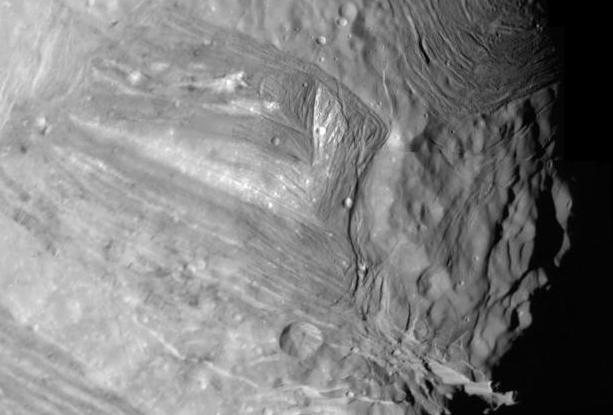
|
Explanation: Miranda is a bizarre world which surely had a tempestuous past. The innermost of the larger Uranian moons, Miranda is almost 300 miles in diameter and was discovered in 1948 by American planetary astronomer Gerard Kuiper. Examined very closely by the Voyager 2 spacecraft in 1986, this dark and distant world turned out to be quite a surprise. Miranda was found to display a unique, bewildering variety of terrain leading some to suggest that it has been fractured up to 5 times during its evolution. Along with the famous "chevron" feature, the bright V-shaped area just above center, this composite of the highest resolution images of Miranda shows wild juxtapositions of ridges and valleys, older cratered and younger smooth surfaces, and shadowy canyons perhaps 12 miles deep. The large crater (below center) is the 15 mile wide crater Alonso.
|
January February March April May June July August September October November December |
| ||||||||||||||||||||||||||||||||||||||||||||||||
NASA Web Site Statements, Warnings, and Disclaimers
NASA Official: Jay Norris. Specific rights apply.
A service of: LHEA at NASA / GSFC
& Michigan Tech. U.
Based on Astronomy Picture
Of the Day
Publications with keywords: Uranus - miranda - Moon
Publications with words: Uranus - miranda - Moon
See also:
